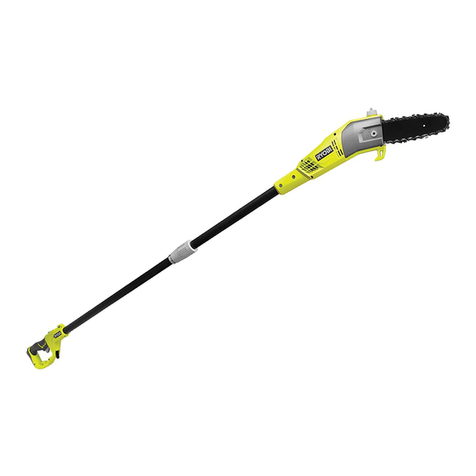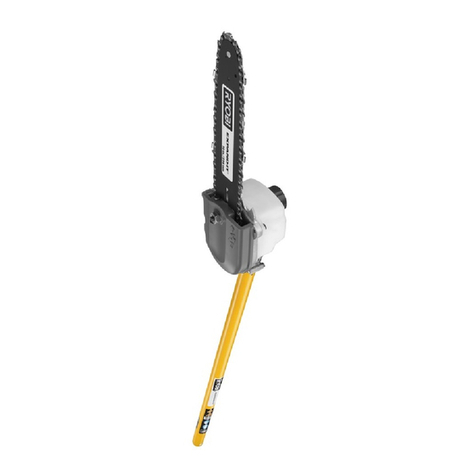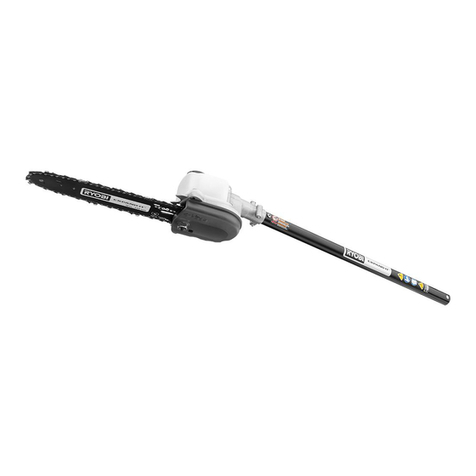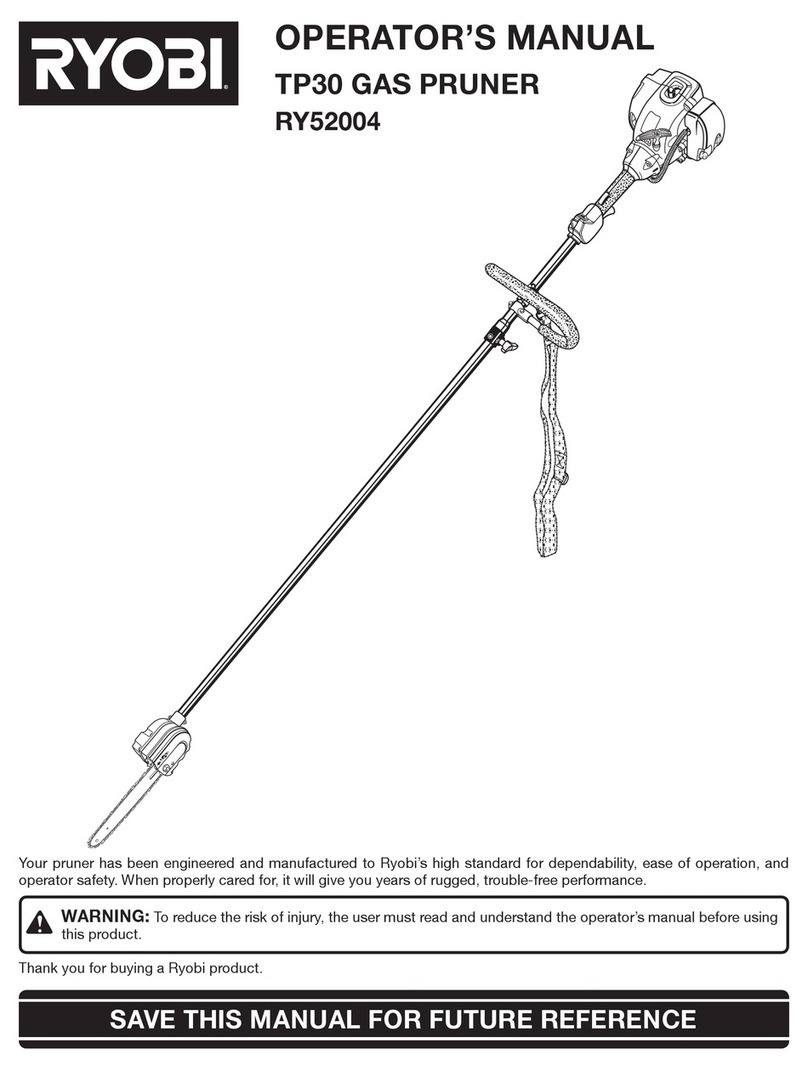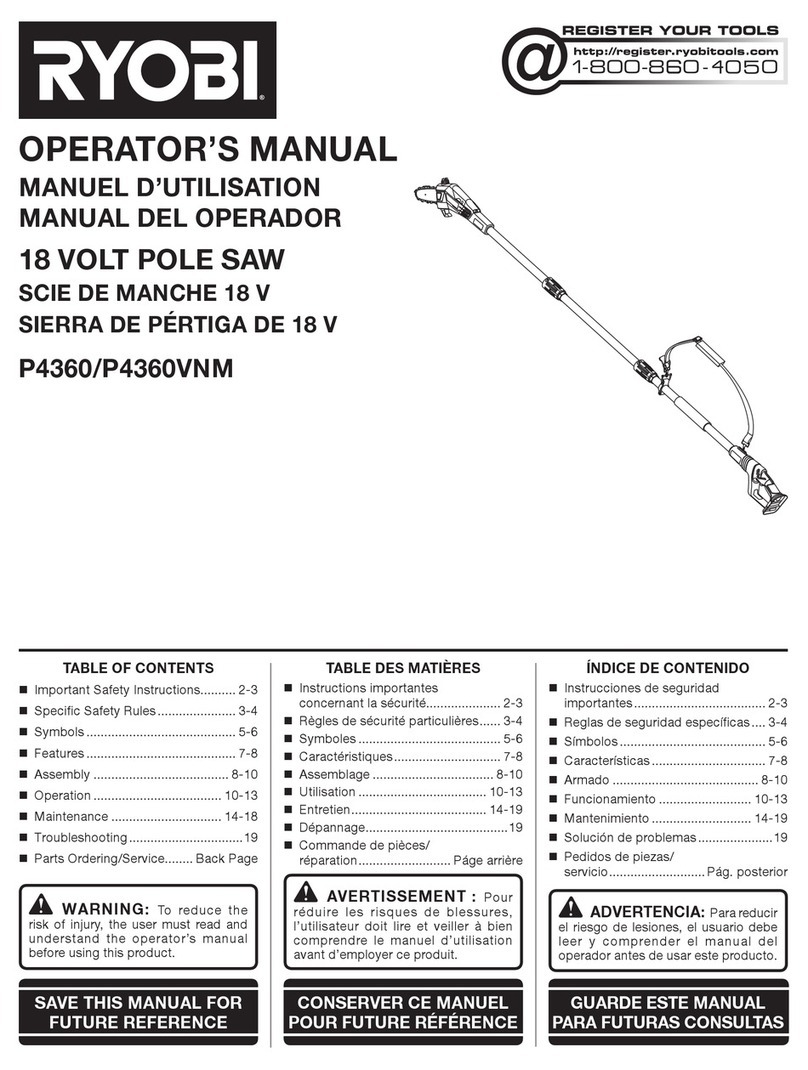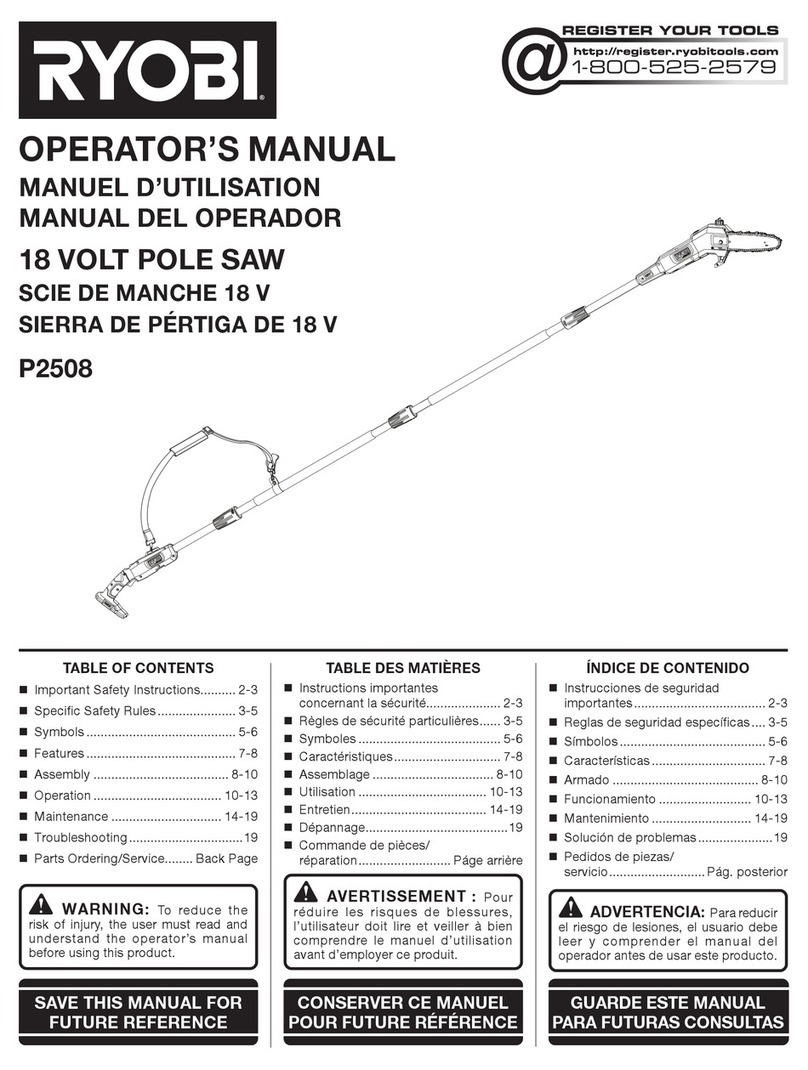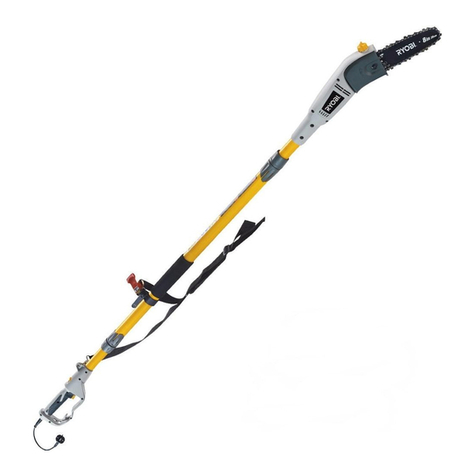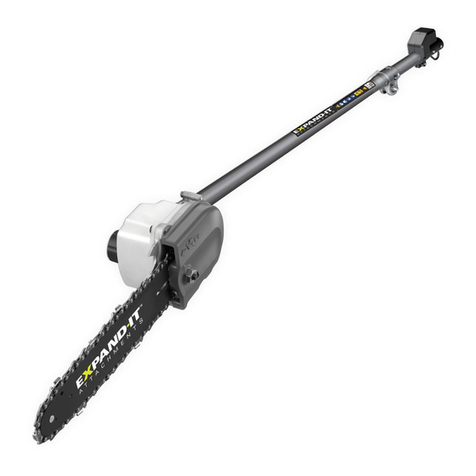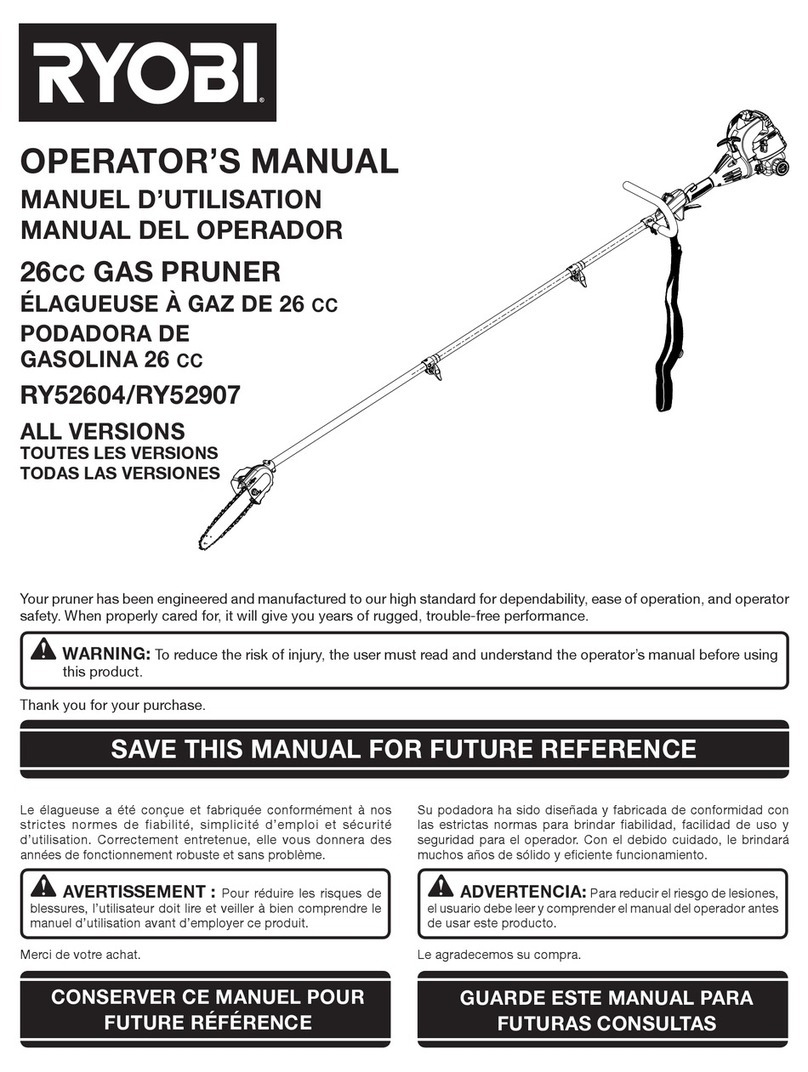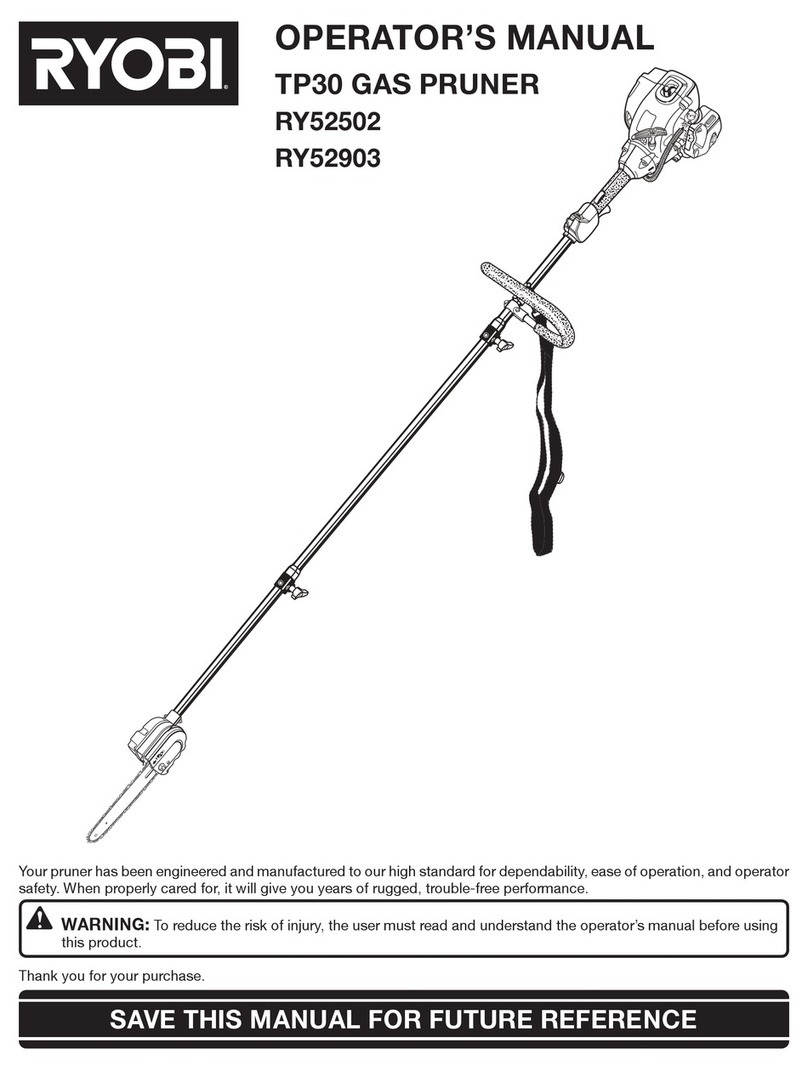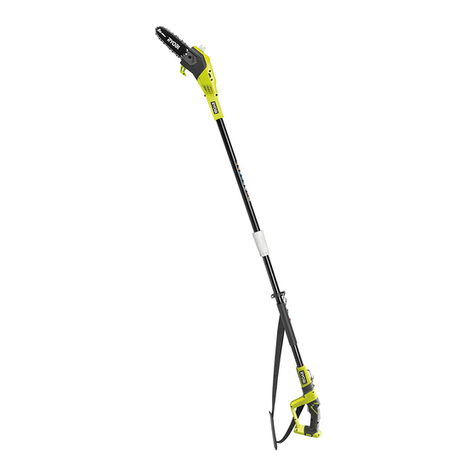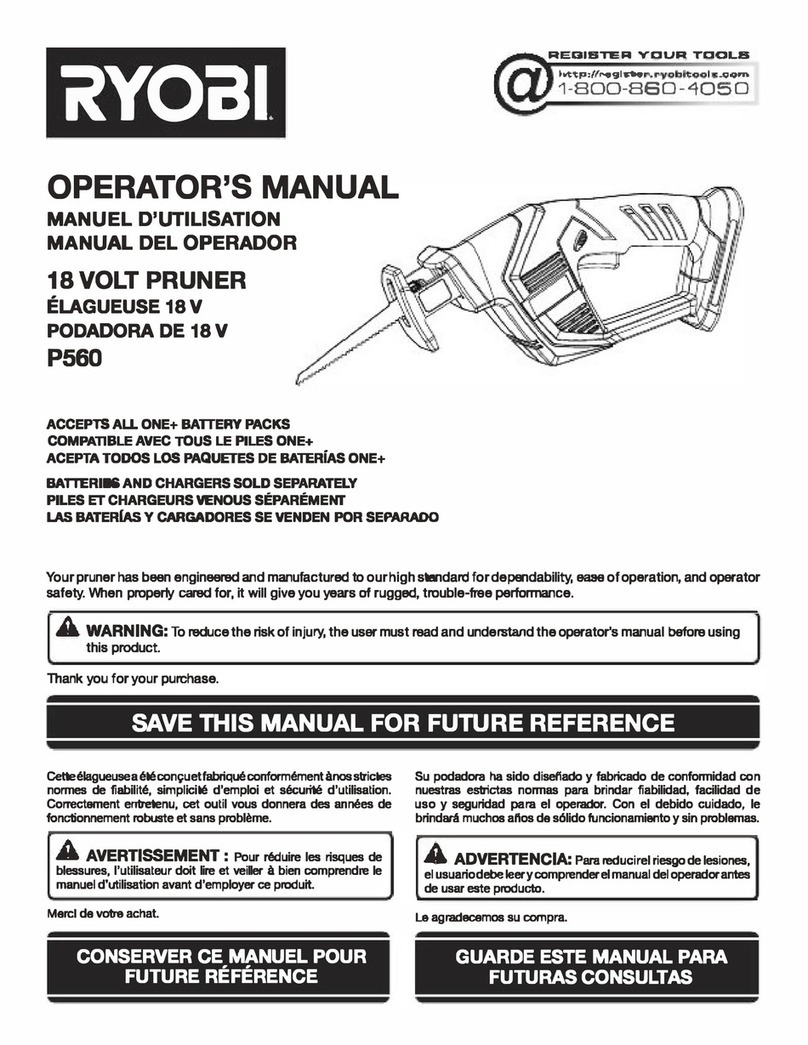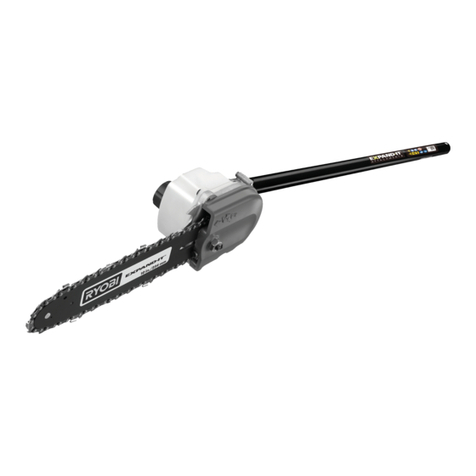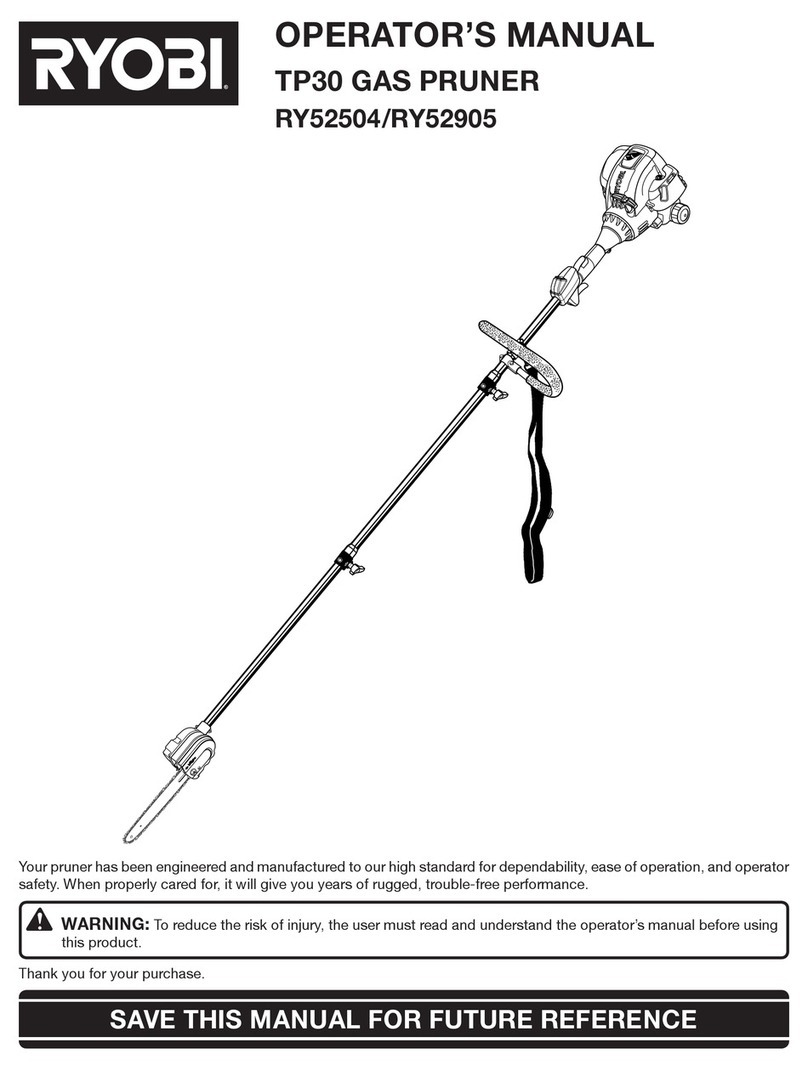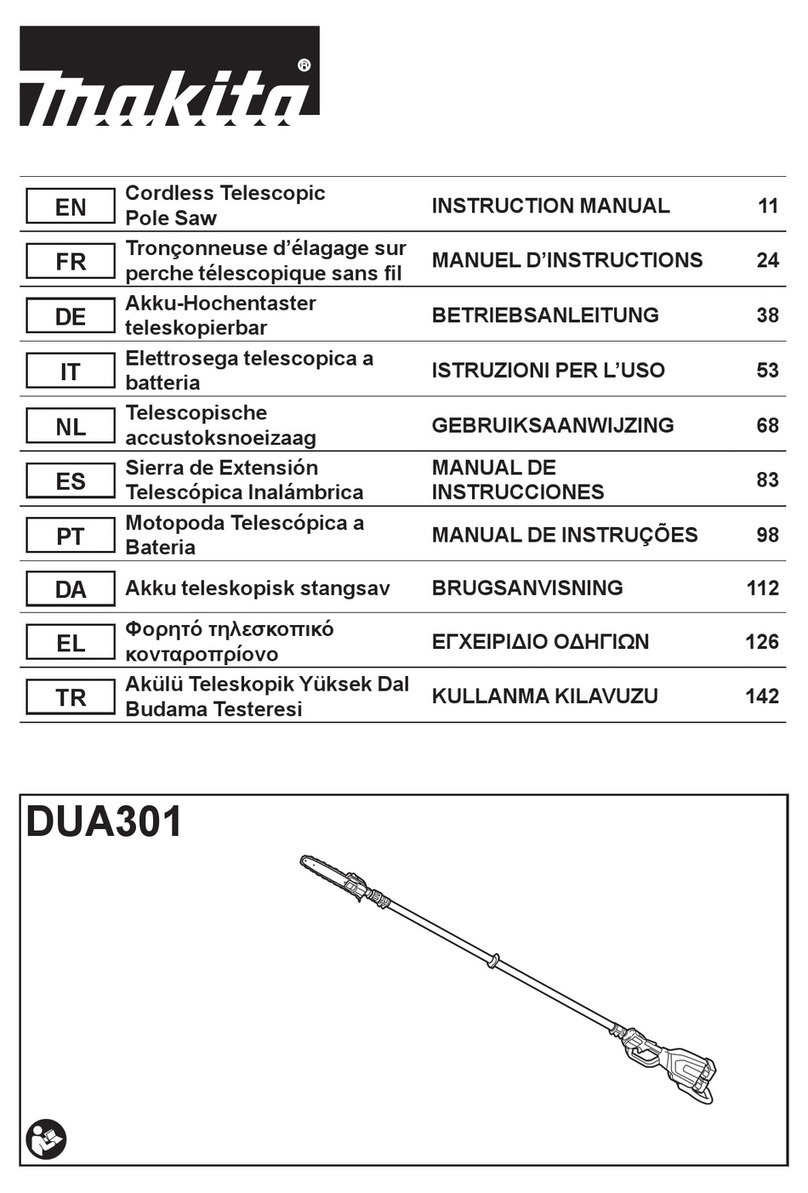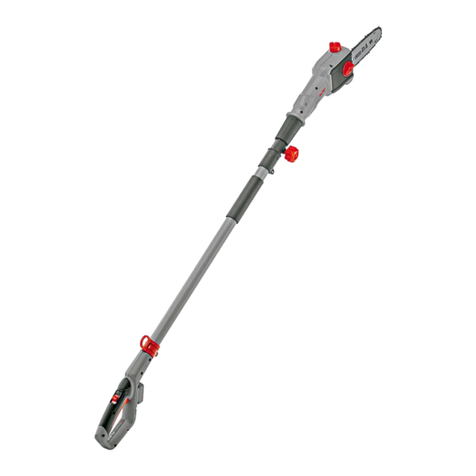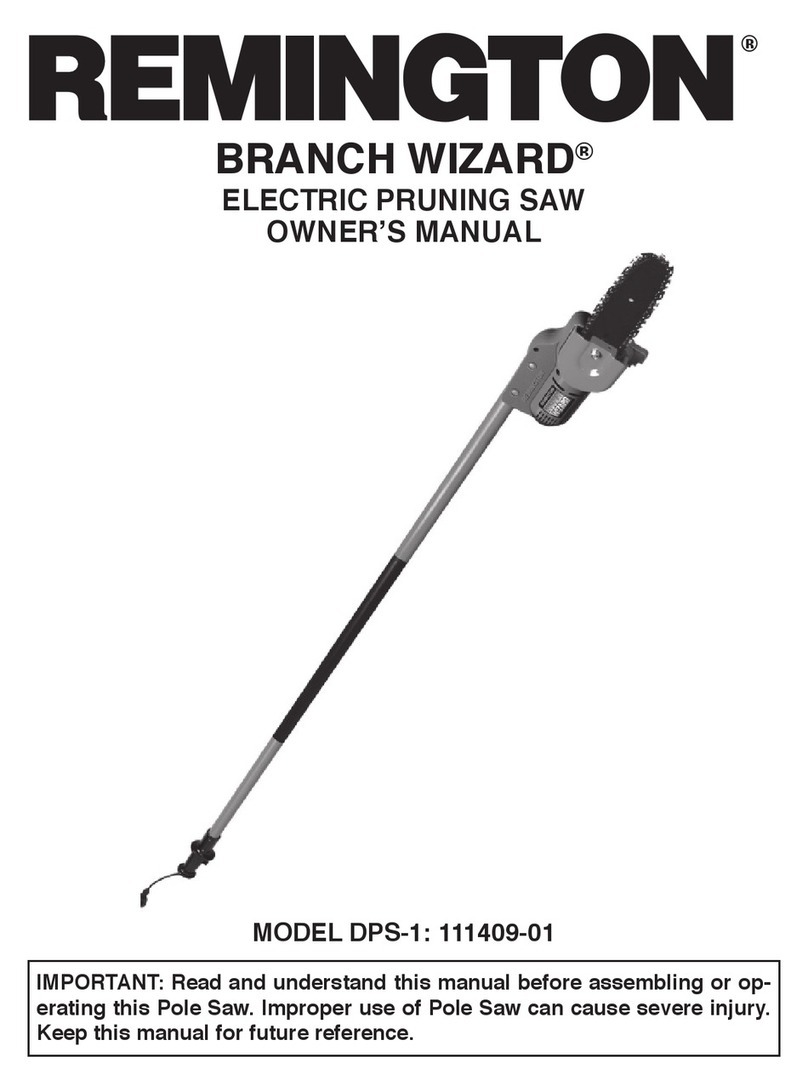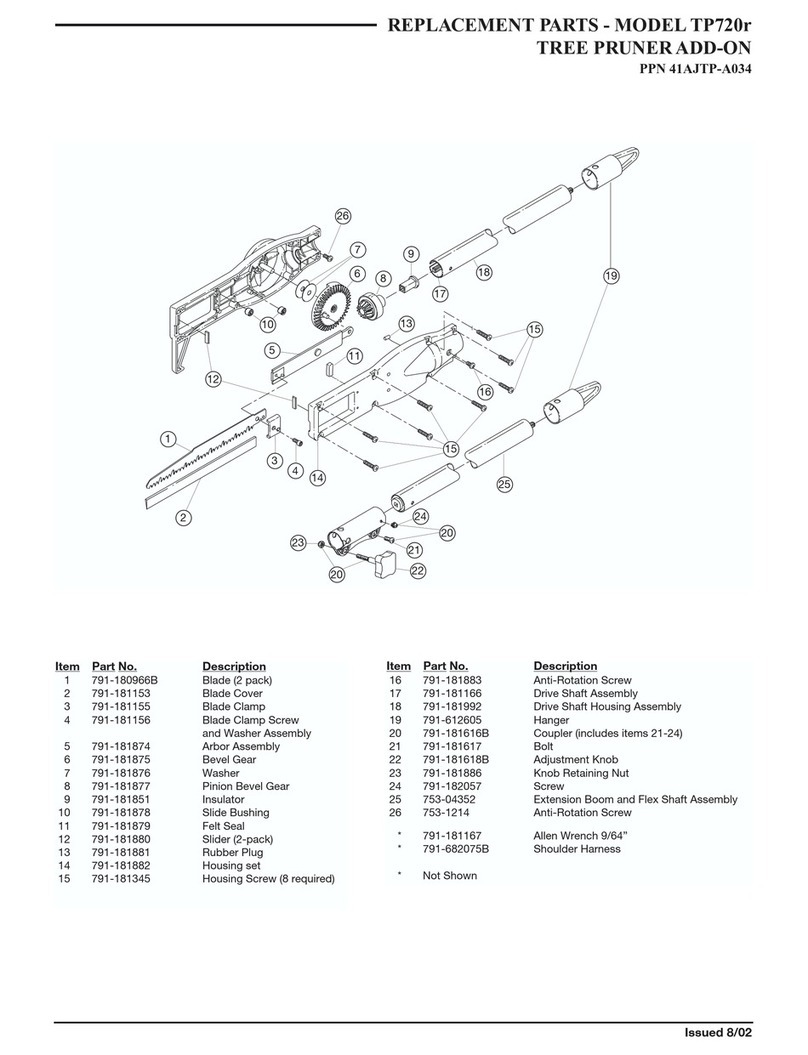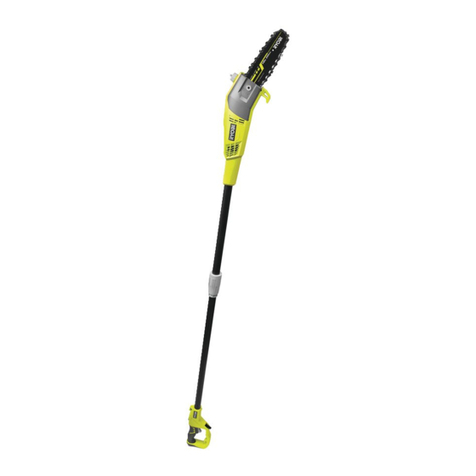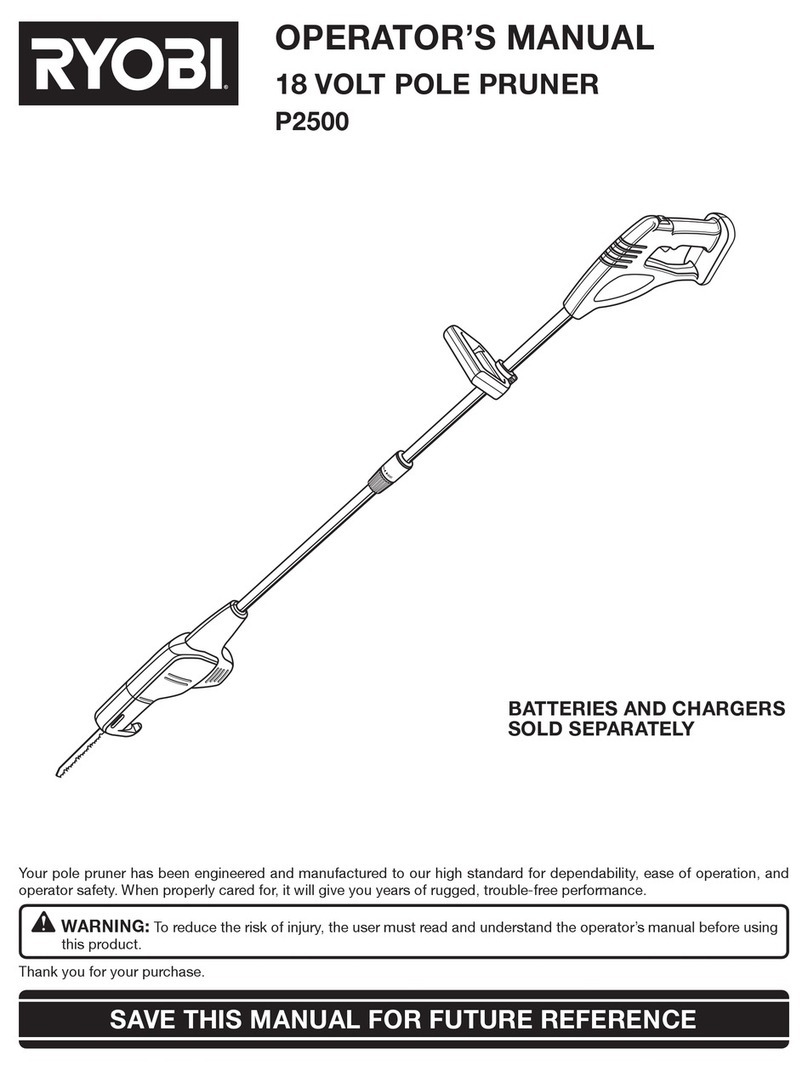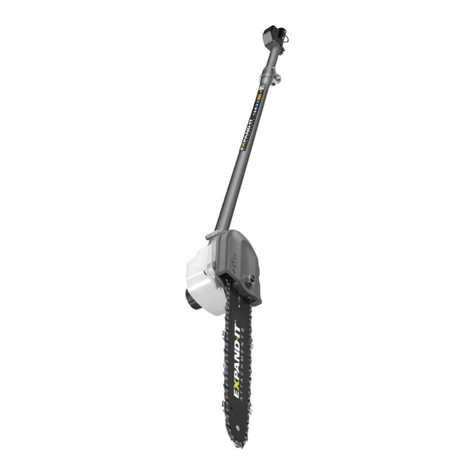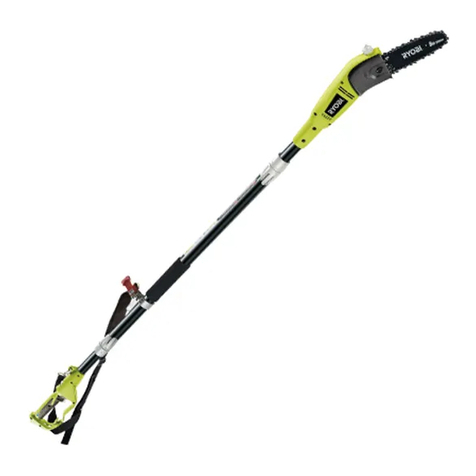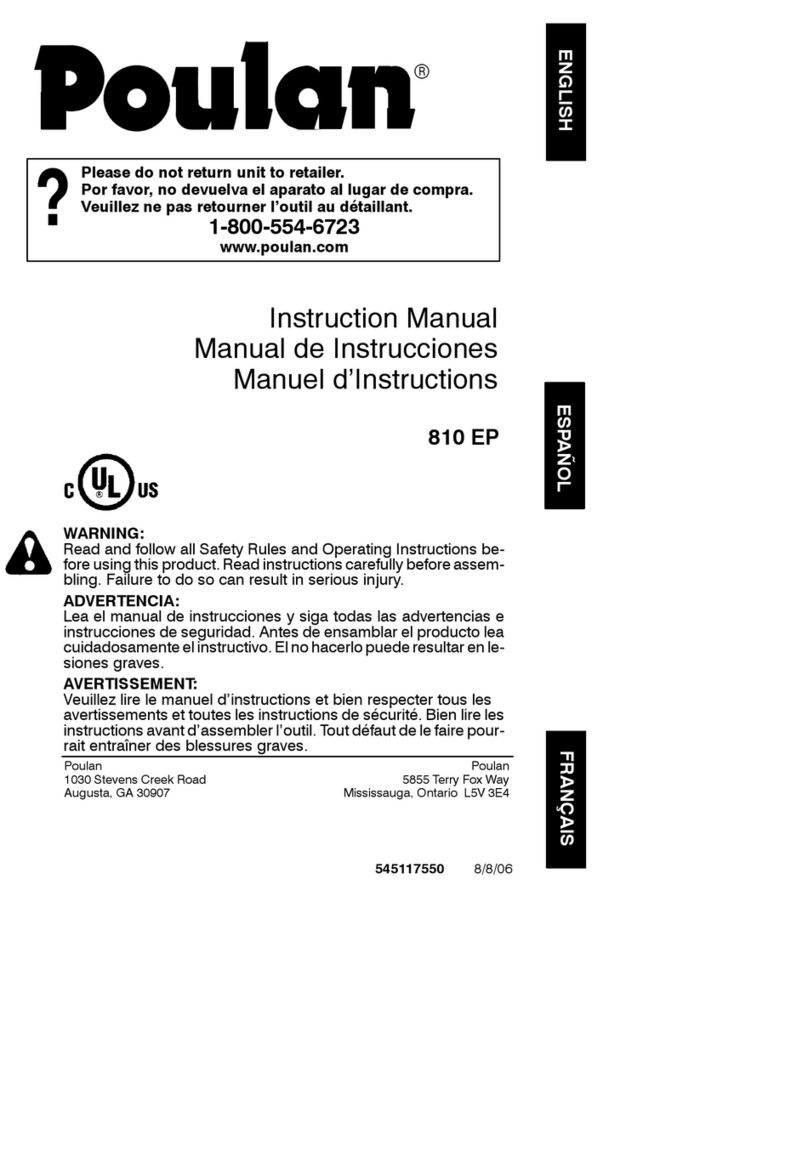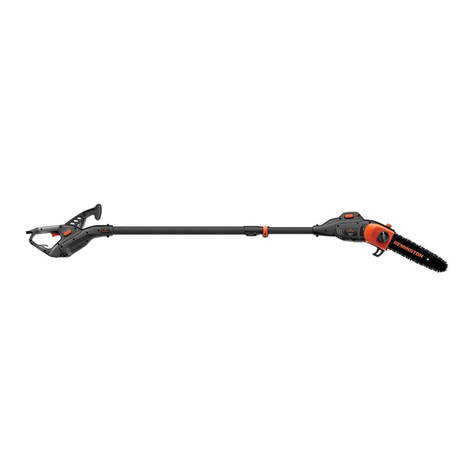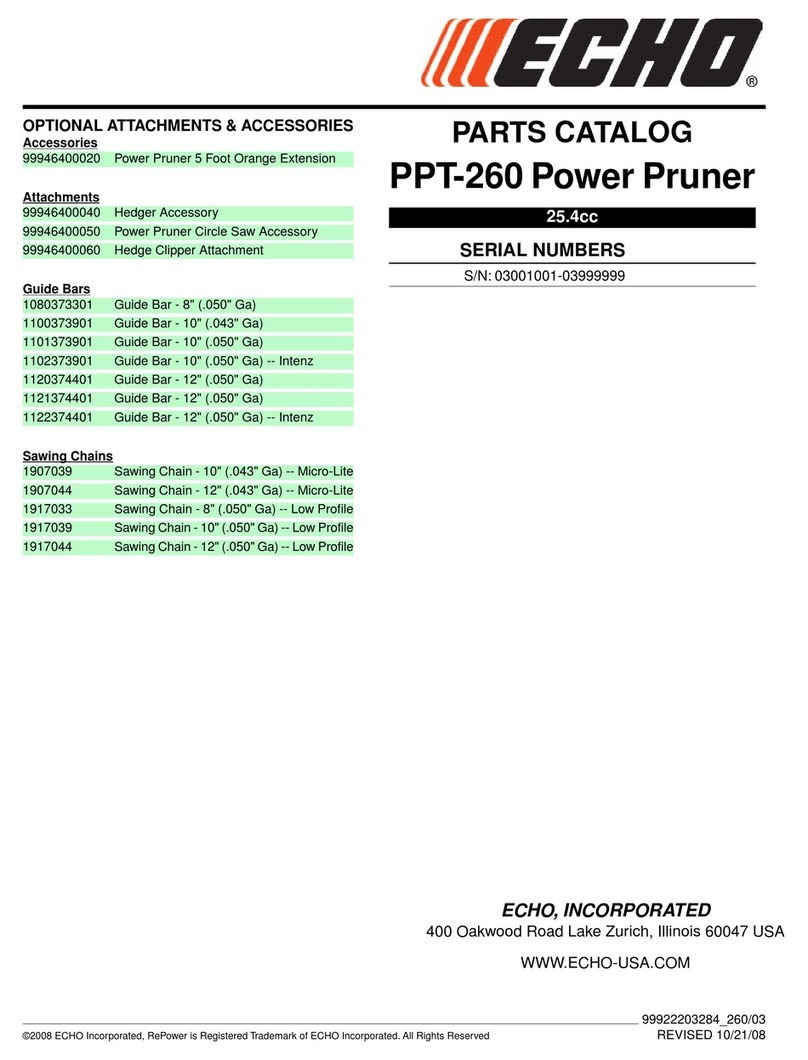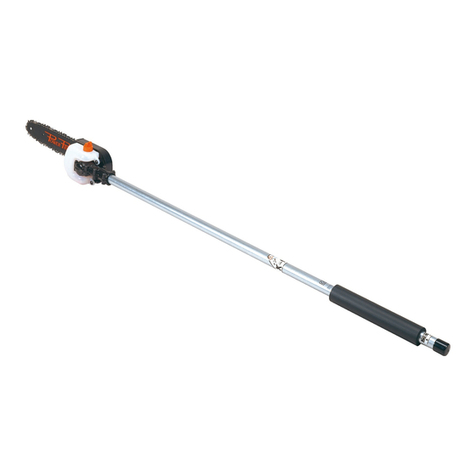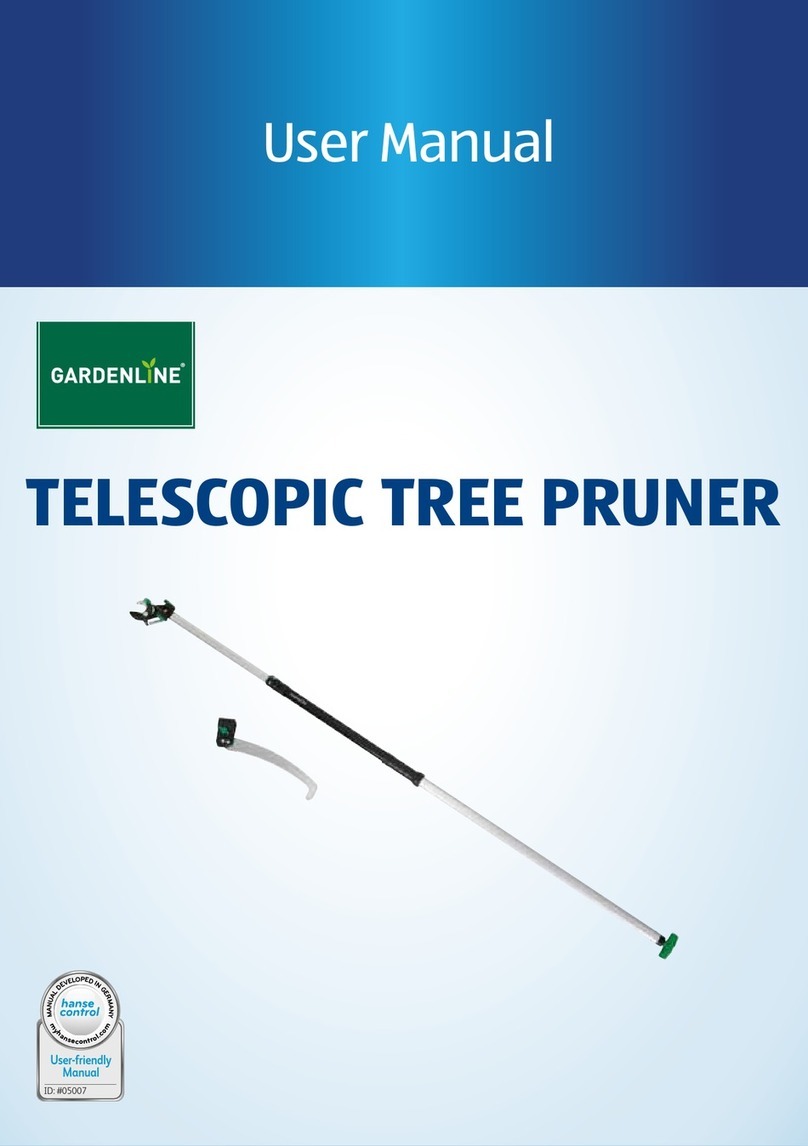
2
■Do not let familiarity gained from frequent use of
tools allow you to become complacent and ignore
tool safety principles. A careless action can cause
severe injury within a fraction of a second.
POWER TOOL USE AND CARE
■Do not force the power tool. Use the correct power
tool for your application. The correct power tool will
do the job better and safer at the rate for which it was
designed.
■Do not use the power tool if the switch does not turn
it on and off. Any power tool that cannot be controlled
with the switch is dangerous and must be repaired.
■Disconnect the plug from the power source and/or
the battery pack from the power tool before making
any adjustments, changing accessories or storing
power tools. Such preventive safety measures reduce
the risk of starting the power tool accidentally.
■Store idle power tools out of the reach of children
and do not allow persons unfamiliar with the power
tool or these instructions to operate the power tool.
Power tools are dangerous in the hands of untrained
users.
■Maintain power tools. Check for misalignment or
binding of moving parts, breakage of parts and any
other condition that may affect the power tool’s
operation. If damaged, have the power tool repaired
before use. Many accidents are caused by poorly
maintained power tools.
■Keep cutting tools sharp and clean. Properly
maintained cutting tools with sharp cutting edges are
less likely to bind and are easier to control.
■Use the power tool, accessories and tool bits etc.,
in accordance with these instructions, taking into
account the working conditions and the work to
be performed. Use of the power tool for operations
different from those intended could result in a
hazardous situation.
■Keep handles and grasping surfaces dry, clean
and free from oil and grease. Slippery handles and
grasping surfaces do not allow for safe handling and
control of the tool in unexpected situations.
SERVICE
■Have your power tool serviced by a qualified repair
person using only identical replacement parts.
This will ensure that the safety of the power tool is
maintained.
ADDITIONAL SAFETY WARNINGS
■Some regions have regulations that restrict the use of
the product to some operation. Check with your local
authority for advice.
■Never allow children or people unfamiliar with the
instructions to use the product. Local regulations may
restrict the age of the operator.
■Ensure before each use that all controls and safety
devices function correctly. Do not use the product if the
“off” switch does not stop the motor/engine.
■Wear full eye and hearing protection, strong sturdy
gloves, as well as head protection while operating the
product; use a face mask if operation is dusty.
■Do not wear loose fitting clothing, short trousers, or
jewellery of any kind.
■Secure long hair so it is above shoulder level to prevent
entanglement in moving parts.
■Use of hearing protection reduces the ability to hear
warnings (shouts or alarms). The operator must pay
extra attention to what is going on in the working area.
■Operating similar tools nearby increases both the risk
of hearing injury and the potential for other persons to
enter your working area.
■Beware of thrown, flying or falling objects; keep all
bystanders, children, and pets at least 15 m away from
work area. Stop the product if anyone enters the area.
■Do not operate in poor lighting. The operator requires a
clear view of the work area to identify potential hazards.
■Keep firm footing and balance. Do not overreach.
Overreaching can result in loss of balance and can
increase the risk of kickback.
■Do not use the product when tired, ill, or under the
influence of alcohol, drugs, or under medication.
■Keep all parts of your body away from any moving part.
■Inspect the product before each use. Check for correct
operation of all controls. Check for loose fasteners,
make sure all guards, and handles are properly and
securely attached. Replace any damaged parts before
use.
■Do not modify the product in any way or use parts
and accessories, which are not recommended by the
manufacturer.
■Do not let familiarity of the product allow you to become
complacent and ignore tool safety principles. A careless
action can cause severe injury within a fraction of a
second.
■Keep handles and grasping surfaces dry, clean, and
free from oil and grease. Slippery handles and grasping
surfaces do not allow for safe handling and control of
the tool in unexpected situations.
WARNING
If the product is dropped, suffers heavy impact or begins
to vibrate abnormally, immediately stop the product and
inspect for damage or identify the cause of the vibration.
Any damage should be properly repaired or replaced by
an authorised service centre.
PRUNER SAFETY WARNINGS
■Never use the pruner when there is a possibility of
thunderstorm or lightning. Store the pruner and/or the
power cables safely indoors.
■Ensure all guards and handles are properly fitted and
are in good condition.
■Do not start using the product until you have a clear
work area, secure footing, and a planned retreat path
away from the falling branches or limbs.
■Beware of the emission of lubricant mist and saw dust.
Wear mask or respirator if required.
■Always hold the pruner with both hands when operating
